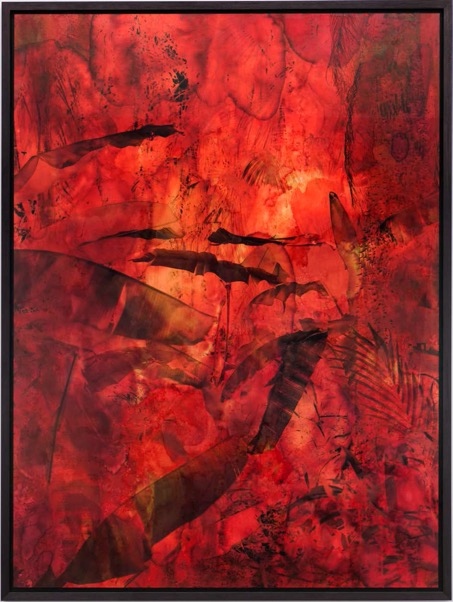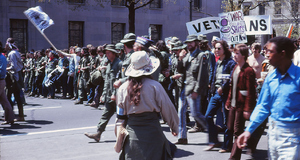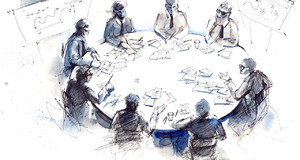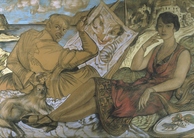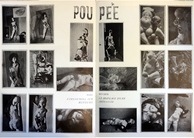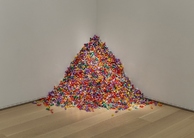The Aftermath of Agent Orange: Combating Slow Violence, Necropolitics, and Stigma in Vietnamese Communities
By
2019, Vol. 11 No. 12 | pg. 1/1 AbstractAlthough the Vietnam War officially ended in 1975, the long-term effects of the toxic contaminant, dioxin, found in Agent Orange continues to be a large public health issue. Throughout this paper, the theoretical framework of slow violence will be utilized to highlight the effects of the temporality of toxins within bodies and how toxins act as agents to affect human bodies transgenerationally. Moreover, the theoretical framework of necropolitics will be utilized to analyze how marginalized communities are deemed expendable by large power structures that keep bodies in a constant state of injury. Means of spreading public awareness and creation of support systems must include considerations of the impact of ableism, stigma, and power structures that affect the daily lives of Vietnamese communities. Through examining the documentation of the lived experiences of marginalized Vietnamese groups, this essay explores the effectiveness of photojournalism, art, and public projects as a way of raising public awareness and engendering more sustainable support systems. Rather than employing damage-based research practices that fail to address complex issues, placing an increased emphasis on the power of collective action fosters more meaningful support systems for dioxin-affected Vietnamese individuals and communities. As part of an effort to aid U.S. soldiers during the Vietnam War, the infamous defoliant, Agent Orange, containing the potent contaminant, 2, 3, 7, 8- tetrachlorodibenzodioxin (TCDD), was sprayed over millions of acres of Vietnamese land. Although the war officially ended in 1975, the transgenerational effects of dioxin continue to have downstream impacts on Vietnamese bodies, communities, and the country as a whole decades after Agent Orange was initially sprayed. The long-term effects of dioxin contamination will be examined through the theoretical lens of slow violence, which emphasizes the importance of considering temporality in regards to exposure and the ability of toxic compounds to accumulate throughout multiple generations. Furthermore, a lens of necropolitics will be utilized to analyze how bodies exposed to dioxin are kept in a continuous state of harm and deemed expendable through institutional inaction from the Vietnamese government, U.S. government, and industrial chemical agencies. Through visual and discourse analysis, I analyze artwork from Thu Van Tran, photojournalism from Philip Jones Griffith, and a public project from Dinh Q. Lê. With the common goal of increasing public awareness of dioxin-related harm to Vietnamese land and bodies, each work takes different approaches to analyze the long-term effects of dioxin. Methods to increase public awareness and garner support for individuals affected by dioxin should prioritize collaborative support systems over simple financial support in order to better support Vietnamese communities. Moreover, comprehensive methods to increase public awareness must consider the impact of hegemonic power structures of colonialism and ableism in order to actively resist the isolation of individuals resulting from necropolitics, slow violence, and stigma surrounding Agent Orange.Agent Orange was manufactured by large industrial companies like Monsanto and Dow Chemical during the Vietnam War. The larger operation was called Operation Ranch Hand and included a wide variety of warfare herbicides, sometimes called Rainbow Herbicides. The two-fold aims of the operation were to destroy leafy cover that enabled Viet Cong guerilla warfare and to destroy the area’s crops in order to limit the food supply of enemy soldiers. The Rainbow Herbicides were initially hailed as a revolutionary technology due to the ability to temporarily disrupt the life cycle of Vietnam’s foliage for a short period of time without effects on human health (Sakata, 2007). However, it was evident that one of the Rainbow Herbicides, Agent Orange contained high levels of contamination of 2, 3, 7, 8- tetrachlorodibenzodioxin (TCDD). Dioxin has long-term effects on human health even in low concentrations and is often measured in parts per million or parts per billion. Between 1961 to 1971, U.S. soldiers sprayed high levels of dioxin over an estimated 4.5 million acres. Currently, many areas of Vietnam are deemed “hot spots” with high levels of dioxin contamination (Stellman & Stellman, 2018). Dioxin is an active molecule that has the agency to interact with and change Vietnamese bodies through accumulation in fatty tissues over time. The long-term effects of dioxin exposure on Vietnamese land and bodies are entangled in complexities regarding differences in power dynamics and cultural understandings of disability between the United States and Vietnam. Therefore, consideration of the history of colonialism and ableism will be considered regarding differential exposure to body burdens. When writing on a complex issue such as mental and physical disability in Vietnamese communities as a result of dioxin exposure, I want to avoid asserting damage-based research practices, which involve “placing the focus on chemical violence by virtue of rendering lives and landscapes as pathological” (Murphy, 2017, p. 496). Considering the increasing wider societal focus on the role of toxic compounds found in the environment and their ability to harm human health, damage-based research refers to the potential to reduce disabled individuals to being experimental subjects in order to gain knowledge about the effects of toxin exposure to benefit more privileged and developed societies. As a result, damage-based research fails to provide meaningful support to improve the lives of marginalized communities and often ignores complexities of different lived experiences by reducing individuals to being subjects to be studied. Therefore, I hope to expand my analysis on this topic by primarily focusing on the effectiveness of different mediums as a means to increase public awareness on the environmental injustice surrounding Agent Orange. First, the theoretical framework of slow violence will be incorporated in order to direct special attention to the temporality of exposure to environmental hazards like dioxin. Specifically, I will be using the definition utilized by Thom Davies which defines slow violence as an invisible form of “delayed destruction that is dispersed across time and space” (Nixon qtd. in Davies, 2018, p. 1539). Typically, violence is seen as direct, instantaneous harm caused by an easily traceable source. However, this is often not the case in terms of exposure to toxins. For example, the adverse health effects of Agent Orange were not publicly acknowledged until Vietnamese and American soldiers, as well as Vietnamese locals, started experiencing higher incidences of cancer and rare diseases after visiting or living in heavily sprayed areas of southern Vietnam. Additionally, the long-lasting effects of dioxin were made public due to the increasing amount of severe birth defects generations after the initial exposure to Agent Orange (Sakata, 2007). Utilizing a theoretical framework of slow violence to analyze the transgenerational effects of dioxin on Vietnamese land enables a more realistic interpretation of exposure-related harm that does not discount an act of violence due to its temporal distance. In addition, Thom Davies’s theoretical framework of necropolitics will be utilized to examine how Vietnamese civilians are kept in a prolonged state of degradation and injury due to violent institutional inaction. Davies’ use of necropolitics is derived from Foucault’s principle of biopower, which examines “the right to kill” certain populations that are deemed replaceable by institutional powers. Necropolitics differs biopower because it focuses on the tendency of institutional powers to permit certain populations to the “possibility of death,” keeping populations in a constant state of harm by failing to provide meaningful support or attention to complex issues facing the marginalized communities (Davis, 2018, p. 1540). The high concentration levels of dioxin across Vietnamese lands continue to be ignored by responsible parties. Stemming from violent inaction of responsible authorities, necropolitical exclusion involves exposing vulnerable populations to toxins and leading to disproportionate environmental injustice for communities due to their assumed expendability and inferiority. (Davies, 2018). In order to more effectively combat necropolitical exclusion, power structures must be considered in order to enable a more comprehensive analysis of the effect of environmental pollution, colonialism, and globalization on the institutional, social, and individual levels. Necropolitical exclusion by institutional agencies further exacerbates the negative consequences of environmental injustice for marginalized communities. In 2003, the Vietnamese Association of Victims of Agent Orange (VAVA) filed a lawsuit against Dow Chemical and other responsible chemical manufacturers, calling for more responsibility in regards to dioxin clean-up and more financial support for affected communities. Through collective action, Vietnamese individuals were able to challenge large, industrial authorities. However, this lawsuit was ultimately unsuccessful in securing reparations for dioxin-exposed individuals. In their legal defense, the chemical companies cited that the responsibility to transport warfare herbicides was in the hands of the U.S. military and was “a matter of social and public policy that should be addressed by the respective governments” (Dawkins, 2008). In the aftermath of the Vietnam War, the U.S. and Vietnamese governments took a united front in ignoring the claims of dioxin harm in order to maintain and avoid confronting the complex issues arising from Agent Orange. When reports of increased human health problems emerged shortly after the Vietnam War, reports of dioxin contamination in Agent Orange were banned in the Vietnamese news cycle since discourse on the contamination of food and soil of Vietnam could harm agricultural exports and continued alliance with the U.S. (Griffiths, 2003). Necropolitical exclusion fails to consider the importance of individual and community-level support for populations that need it the most. Furthermore, these same populations are deemed expendable in the interest of financial gain. Large-scale collective action is necessary in order to fight for support for Vietnamese civilians affected by Agent Orange as a means to counteract necropolitical exclusion. Due to years of pressure placed on the U.S. government to address long-term problems caused by Agent Orange, financial support has been provided in order to decontaminate affected areas of Vietnam. In a six-year-long project, the U.S. government has provided around $116 million dollars of financial support for decontamination of dioxin hotspots such in areas such as the Da Nang airport (Congressional Research Service, 2018). However, this area is only one of many dioxin hotspots that continue to affect Vietnam’s water and food sources (Schechter, 2003). Although financial support in the form of decontamination can alleviate dioxin exposure in certain areas, it is a band-aid approach to a complex issue. By focusing on the decontamination of hotspots, responsible agencies attempt to “erase” the history of the Vietnam War by temporally reverting the land back to conditions before Agent Orange was sprayed. However, macroscale financial support avoids addressing the irreversibility of slow violence inflicted on Vietnamese bodies and communities over time. In order to provide more meaningful local support, education of Vietnamese communities of the widespread problems stemming from stigma surrounding disability and toxin exposure must also be prioritized. Isolation of dioxin-exposed individuals from discrimination prevents collaborative action for those directly or indirectly affected by dioxin while subsequently turning Vietnamese civilians against one another. Due to stigma in Vietnam, families of disabled individuals tend to have a lower earning capacity due to “limited work choice, anti-work incentives of government program... or from educational, environmental, or social barriers to employment.” Moreover, family members decrease their time spent on education or working in order to additionally act as caregivers (Palmer, 2015). In Sakata’s documentary, Agent Orange: A Personal Requiem, she documents Vietnamese parents who have given birth to more than four children with birth defects from dioxin exposure. Young couples are scared to have children due to the financial constraints and stigma surrounding disability in Vietnam. Moreover, medical professionals have suggested “therapeutic abortion” in order to alleviate the financial plight of these communities (2007). Vietnamese culture, traditions, and societal beliefs must be considered when addressing the many ways to overcome the highly stigmatized topic of disability that often leads to isolation of affected families. Ableism refers to discrimination against individuals from full participation in society as a result of mental or physical disability. Hegemonic ableist discourses surrounding Agent Orange are exacerbated by necropolitical exclusion, slow violence, and societal stigma. Through her series, From Green to Orange, Thu Van Tran provides a unique perspective concerning dioxin contamination on Vietnamese soil as a means to showcase the long-lasting impacts of Agent Orange. This analysis will primarily focus on one image from Tran’s “From Green to Orange” series. Although we can only see the end product of her artwork, the title references the initial artistic stages of creation. The title emphasizes the shift in the characterization of Vietnamese land, which is initially represented by green foliage and is eventually replaced with orange permeation. Dye and rust provide the orange coloration within the artwork that penetrates throughout the original silver film (KADIST, 2014). Additionally, there is a darkened streak going across the bottom of the painting. Thu Van Tran materializes the effects of dioxin, which is normally invisible, into an artistic aspect of her painting that refuses to be ignored. Since the orange rust becomes the main focal point in her art, Tran effectively captures the impact caused by dioxin saturation on Vietnamese land. Slow violence is depicted through the utilization of rust in order to emphasize the destructive nature of Agent Orange over time. The chemical basis of the rusting reaction involves reacting iron with environmental components of water and oxygen in order to create the chemical product of iron oxide (Wilensky, 1999). Thu Van Tran’s utilization of this chemical reaction relates to how dioxin originated as a contaminant in Agent Orange. During the manufacturing process, dioxin was produced from a combustion reaction and was a byproduct of the accelerated production of Agent Orange for war use (Griffiths, 2003). Often times, rust is an inherent and unintended consequence as a result of metal reacting with the environment over time. Similarly, dioxin was unintentionally produced by the chemical manufacturing process. Thu Van Tran’s use of the chemical reaction of rust demonstrates the irreversibility of toxins on Vietnamese land. The creation of rust is spontaneous and happens over time and requires human effort in order to reverse the process. Similarly, dioxin was created spontaneously but requires a large amount of human effort to remove, as evidenced through the millions of dollars spent in decontamination campaign of the Da Nang Airport. Environmental toxins are often viewed as mistakes that can be undone through technological advances; however, the harm inflicted on human health, especially during prenatal life, is irreversible. Dioxin continually accumulates in the fatty tissues of non-human and human species and its transgenerational effects on human health cannot be fixed through simple financial support. The utilization of rust powerfully encompasses the idea that slow violence against populations can be temporally distant and irreversible. Power dynamics in the context of colonialism between the U.S. and Vietnam are also depicted in Thu Van Tran’s From Green to Orange. The black streak going across the bottom of the painting represents the blackened, Vietnamese soil that continues to affect local communities living in sprayed areas. Necropolitics is referenced in the sustained damage to Vietnamese soil and human bodies, which keeps communities and individual bodies in a constant state of injury. In contrast to conventional perceptions of nature as idyllic, Vietnam’s forests and groves were seen as a threat to the U.S. soldiers, as Viet Cong soldiers would hide in the dense foliage before surprise attacks (Sakata, 2007). The permeation of orange within the artwork represents the American desire to control Vietnamese landscapes in order to advance U.S. military goals. “Colonialism refers to a system of domination that grants settler access to Land for settler goals” (Liboiron, 2018, para. 4). In this case of colonialism, U.S. military powers not only aimed to control Vietnamese landscapes but fought on Vietnamese land with the intention to overthrow the communist government of North Vietnam in order to defend democratic ideology. The motivation to defend democracy stemmed from the Cold War’s larger power struggle between the United States and the Soviet Union. Meanwhile, Vietnam became the battleground for the political debate. To American colonizers, Vietnamese land represented a foreign and disconnected area that needed to be controlled without major consideration of the local Vietnamese populations. This connects to the concept of necropolitics in which the Vietnamese population became expendable and were exposed to the possibility of death in order to advance U.S. settler goals. Thu Van Tran’s artwork provides a form of epistemological knowledge that is able to capture a more complex and nuanced understanding of Agent Orange from a Vietnamese perspective. Photojournalist and Vietnam war veteran Phillip Jones Griffith showcases a culmination of his twenty-two-year long project in his publication, Agent Orange: “Collateral Damage” in Vietnam, which documents the transgenerational effects of dioxin exposure. His book consists of a culmination of black-and-white still photos taken of deformed babies preserved in formaldehyde, disabled children and their families, and Vietnamese landscapes along with background information on Agent Orange. Moreover, it includes descriptions of locations in which higher levels of birth defects are seen like the village of Cam Nghia, which Griffith refers to as the “Village of the Damned” (Griffiths, 2003, p. 108). Each photo is supplemented with a short caption and the subjects’ first and last name or the captions mention when the subjects have died before being given a name. When discussing why he initially pursued the project, Griffith cites cases of necropolitical exclusion from the U.S. and Vietnamese governments and the industrial chemical agencies responsible for dioxin production (Griffiths, 2003, p. 17). The goal of his project is to spread awareness of the increasing rates of dioxin-related disability and the exacerbation of issues stemming from low socioeconomic conditions. Within the title of his book, Griffiths includes the controversial term, “collateral damage,” referencing body burdens arising from necropolitics and slow violence in regards to Agent Orange. The military term “collateral damage” is used to refer to the harming of non-combatants and their property as an unintended consequence of war. This wording usage is controversial as many argue that utilizing the term “collateral damage” provides justification for U.S. military leaders to refuse responsibility for unintended harm done on civilians and property during acts of war (Dill, 2015). Expanding on the idea of civilian casualties as an unintended consequence, Griffiths highlights the transgenerational damage on Vietnamese children as the focal point of his work. While his photojournalism work does effectively document the downstream health effects of dioxin on Vietnamese communities for the public eye, I contend that he does not fully capture the various complexities of dioxin exposure and employs damage-based research practices rather than encouraging more effective support systems. Peter Jones Griffith’s work is an example of damage-based research. Through photojournalism, Philip Jones Griffith’s researches and exposes the environmental injustices of vulnerable and impoverished populations in Vietnam. In his book, he writes “Viet Nam is the ultimate laboratory where the clues to dioxin’s murderous progression can be discovered.” Additionally, he advises that scientists should pay more attention to the rare opportunity to study "ethnically identical people separated into two groups (North and South Viet Nam)” (Griffiths, 2003, p. 174). In general, a majority of western scientific research is done through a comparison of the differences between control groups and experimental groups in order to obtain meaningful scientific data. By stating that the North Vietnamese can serve as a control group while the South Vietnamese can serve as an experimental group, Griffith reduces Vietnamese individuals to being experimental subjects in order to advance western knowledge in regards to dioxin’s effect on human health. There has been increasing societal interest in regards to toxin exposure. The information gathered from Griffith’s proposed study will most likely be used to benefit western society in an attempt to avoid disability and toxin-related human harm, further exacerbating injustice rather than correcting it. Damage-based research does not provide meaningful avenues for support to help the affected Vietnamese individuals. The benefit of documenting instances of human harm is that Griffith’s work is able to attract more attention through sensationalizing disability, drawing more awareness to the issue of dioxin exposure to a wider audience. However, Griffiths approach reinforces the notion that dioxin-affected communities are broken and damaged and fails to consider the realities of his subjects’ lived experiences. Performing damage-based research and increasing public awareness are not mutually exclusive acts. Ways of increasing public awareness that attempt to correct the continual effects of stigma, colonialism, necropolitics, and slow violence on dioxin-related disability more comprehensively spread awareness of local Vietnamese perspectives on the transgenerational effects of Agent Orange. Photojournalism also has historically been championed by wealthier outsiders that visit a foreign nation in order to document the plight of disadvantaged communities. Philip Jones Griffith is able to capture images that are representative of major issues facing the Vietnamese communities, however, these images can also “feed into an unhealthy racial and global discourse of Western imperialist ideals of superiority” (Mabry, 2014, p. 3). This method is often employed without a full understanding of Vietnamese communities and the lived experiences of families with these disabilities. In order to document instances of Vietnamese birth defects Griffith stated, “I persuaded the staff [at Tu Du hospital] to phone my hotel whenever an abnormal baby was born so that I could rush over and photograph the unfolding tragedy” (Griffiths, 2003, p. 19). Griffith benefits from the privilege of being an outsider from the U.S. photographing harmed communities in Vietnam since he does not permanently reside in the communities in which he documents. Griffiths’ work is biased due to thefact that he chooses what moments to document in his book and what images to leave out. The images in his book are carefully curated in order to create a public reaction of outrage and anger to an international audience. The short caption supplementing each image makes it impossible for readers to envision life beyond disability for Griffith’s subjects. By only including a few short sentences describing each individual’s conditions, Griffith chooses to only report on the physical and mental damage stemming from dioxin-related disability, overemphasizing the transgenerational devastation of dioxin on human health. While his work is effective at raising public awareness of slow violence and necropolitics in the aftermath of Agent Orange, it does not provide avenues for meaningful ways to combat the isolation of his subjects. Instead, damage-based research exacerbates the stigma already surrounding disabled individuals by reducing their lived experiences to a simple caption. The Damaged Gene ProjectIn 1998, the “Damaged Gene” project was a temporary public project created by Vietnamese artist, Dinh Q. Lê, which aimed to increase public awareness about the stigma, superstition, and lack of public awareness of dioxin exposure. Similarly to Peter Griffith Jones, the catalyst for Dinh Q. Lê’s public project stemmed from a desire to address the environmental injustice of Agent Orange. In an interview, Lê mentioned that he came up with the public project after he noticed how the Vietnamese public did not acknowledge Agent Orange and the Vietnam War since it was a taboo subject. Moreover, he noticed that the Vietnamese and U.S. governments were not publicly discussing the effects of dioxin. As a result, he witnessed the isolation of Vietnamese individuals stemming from stigma and lack of education in Vietnam. Therefore, as a means of addressing slow violence and necropolitics in the aftermath of Agent Orange, Lê wanted to create a space for the public to pause, to confront the realities of Vietnam’s past by asking questions, and to be able to bring items with them as a means to destigmatize important conversations (Roth, 2001). Siamese twins occur when twins are born physically conjoined to one another. Among the many birth defects cited as a result of dioxin exposure, Siamese twins have been increasingly documented in Vietnam. Lê uses this statistic in order to gain inspiration for his artistic projects with the aim to spark conversation about birth defects stemming from transgenerational effects of dioxin exposure. Upon visiting the shop, customers saw children’s clothing, pacifiers, and figurines inspired by Siamese twins (Human Arts Association, 2011). Lê chose to create children’s clothing for Siamese twins with names of the industrial chemical companies as a means of addressing instances of necropolitics among the responsible agencies that produced Agent Orange. By selling children’s clothes and figurines, his public project opened up avenues for inquiry because children’s clothes are typically well-loved. The twist was that his clothing featured children’s clothing that had two head holes or four different leg holes, allowing customers to ask questions about his products as an effective way to introduce conversation surrounding a taboo subject. By allowing open dialogue, the “Damaged Gene” project avoids the issue of one-way information exchange without listening to the perspectives of Vietnamese civilians. When analyzing the cultural impact of dioxin exposure, Dinh Q. Lê noticed that there was a lack of emphasis on the consideration of cultural stigma for disabled individuals. Typically, Vietnam is a superstitious country. In an interview with Dinh Q. Lê, he found that in some villages, people began worshipping the Siamese twins as villagers believed they were spiritual beings (Roth, 2001). This treatment of Siamese twins as other-worldly entities rather than human beings with their own lived experiences is a result of the lack of surrounding Agent Orange. Instead of viewing these children affected by birth defects as victims of dioxin exposure, Vietnamese treatment of these children as non-human essentially leads to further isolation and prevents the formation of collaborative communities. In order to counteract necropolitics, slow violence, and stigma surrounding this topic, Dinh Q. Lê opened his temporary shop in the center of Ho Chi Minh in an International Mall in the center of District 1. The location of this project bridges the disconnect between rural areas highly affected by dioxin with the urban, modernized life in District 1 of Ho Chi Minh. Moreover, a recapitulation of this public project through documentaries, articles, and other online mediums can be shared on in order to keep the “Damaged Gene” project relevant. Although his public project was only open for a one-month-long period in 1998, it serves as a meaningful example of the importance of public conversation in how artwork can force the public to critically think about difficult topics such as the Vietnam war, ableism, and the effects of environmental toxins. ConclusionTaken together, these mediums provide different forms of knowledge to the public eye. It is often difficult to raise awareness about a complicated and sensitive issue such as disability-related dioxin exposure because it is shaped by a complex history of necropolitics, slow violence, and embedded societal norms like ableism. Problematic ways of reducing populations to objects of experimental study of exposure through damaged-based research can lead to unethical dissemination of information that fails to counteract environmental injustice at the source. Moreover, mediums that ignore the continuation of societal stigma around disability prevent collaborative unity among Vietnamese civilians that is often necessary to support marginalized communities. In contrast to simple financial support to fund macro-scale decontamination efforts, community-level projects such as the Friendship Village foster more meaningful support systems by counteracting ableist thinking, providing sustainable financial support, and improving meaningful human connections. In her documentary, Sakura highlights the work of Friendship Village, which works to provide housing, education, work, and communal support for individuals affected by dioxin exposure. With a donation of just $3,000, Friendship Village was able to build their own fish farm in order to help sustain the community in the long-term (Sakata, 2007). Friendship Village’s stated goal of self-sufficiency empowers Vietnamese locals to teach skills or provide work opportunities that can translate into a sustainable resource, especially in impoverished areas. There are many examples of these community-based initiatives like Friendship Village that should be more widely supported. Financially funding decontamination efforts or documenting the damage resulting from dioxin exposure does not confront the complex issues that shape Vietnamese lived experiences in the aftermath of the Vietnam war. Community-based projects that mitigate necropolitical and societal exclusion must actively work to engender more support and opportunities for Vietnamese communities by providing spaces for solidarity and healing. References Condra, L., & Shapiro, J. (2012). Who Takes the Blame? The Strategic Effects of Collateral Damage.American Journal of Political Science,56(1), 167-187. Retrieved from http://www.jstor.org/stable/23075150 Congressional Research Service. (2018). “U.S. Agent Orange/Dioxin Assistance to Vietnam.” Davies, T. (2018). Toxic Space and Time: Slow Violence, Necropolitics, and Petrochemical Pollution, Annals of the American Association of Geographers, 108, 6, 1537-1553, Doi: 10.1080/24694452.2018.1470924 Dawkins, Cedric. (2008). Dow Chemical and Agent Orange in Vietnam. The CASE Journal. 4, 153-165. Doi: 10.1108/TCJ-04-2008-B006. Griffiths, P. (2003). Agent Orange: “Collateral Damage” in Vietnam.” London: Trolley. Human Arts Association. (2011). “Agent Orange Aftermath – Artist Dinh Q. Le – Vietnam: The Secret Agent.” Retrieved from https://www.youtube.com/watch?v=oKjsx8NxIyE. KADIST. (2014). Thu Van Tran From Green to Orange. Retrieved from https://kadist.org/work/from-green-to-orange/ Liboiron, M. (2018). Waste Colonialism. Retrieved from https://discardstudies.com/2018/11/01/waste-colonialism/ Mabry, H. (2014). “Photojournalism, Colonialism, and Racism.” International Affairs Review. Retrieved from https://www.usfca.edu/sites/default/files/arts_and_sciences/international_studies/photography_colonialism_and_racism_-_university_of_san_francisco_usf.pdf Mbembe, A. (2003). Necropolitics. Public Culture 15 (1). Doi: 10.1215/08992363 Murphy, M. (2017). Afterlife and Decolonial Chemical Relations. Cultural Anthropology, 32 (4), pp. 494 - 503. Doi: 10.14506/ca32.4.02 Nixon, R. (2013). Slow Violence and the Environmentalism of the Poor. Harvard University Press. Palmer, M., Groce, N., Mont, D., Nguyen, H., & Mitra, S. (2015). “The Economic Lives of People with Disabilities in Vietnam.” PLOS ONE, 7, 10, https://doi.org/10.1371/journal.pone.0133623 Roth, M. (2001). Obdurate History: Dinh Q. Lê, the Vietnam War, Photography, and Memory. Art Journal, 60 (2), 39-53. https://doi.org/10.1080/00043249.2001.10792063 Sakata, M., & Megalos, B. (2007). Agent Orange: A personal requiem (Streaming video]. United States: Icarus Films. Retrieved from http://docuseek2.com/if-agen. Schecter, A., Hoang, Q., Pavuk, M., Papke, O., Malisch, R., & Constable, J. (2003). “Food as a Source of Dioxin Exposure in Residents of Bien Hoa City,” Vietnam, 45, 8. Doi: 10.1097/01.jom.0000085786.50835.71 Stellman, J. M., PhD., & Stellman, Steven D., PhD., M.P.H. (2018). Agent orange during the vietnam war: The lingering issue of its civilian and military health impact. American Journal of Public Health, 108(6), 726-728. http://dx.doi.org/10.2105/AJPH.2018.304426 Wilensky, U. (1999). NetLogo Center for Connected Learning and Computer-Based Modeling, Northwestern University, Evanston, IL. Retrieved from http://ccl.northwestern.edu/netlogo/.
Suggested Reading from Inquiries Journal
Inquiries Journal provides undergraduate and graduate students around the world a platform for the wide dissemination of academic work over a range of core disciplines. Representing the work of students from hundreds of institutions around the globe, Inquiries Journal's large database of academic articles is completely free. Learn more | Blog | Submit Latest in Visual Arts |

